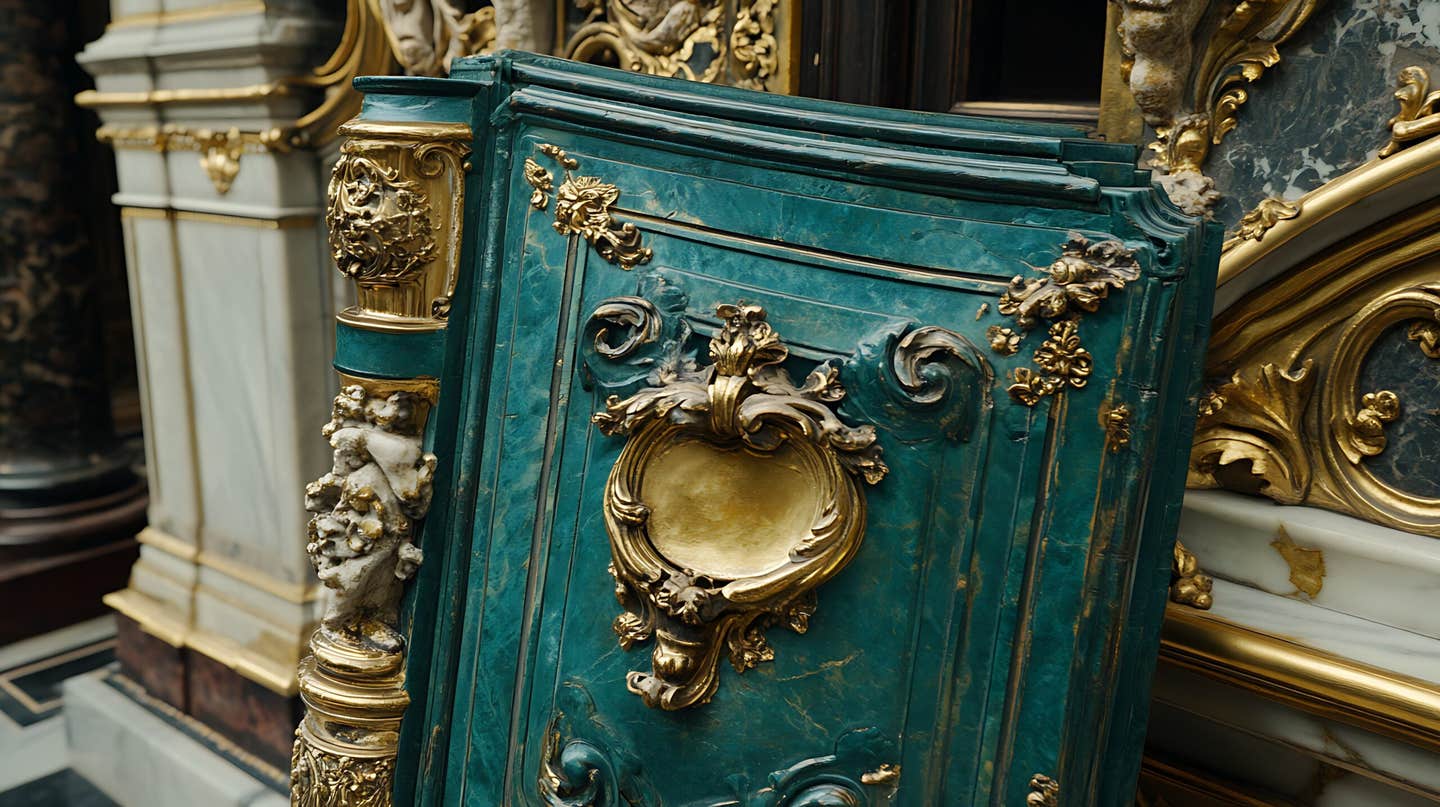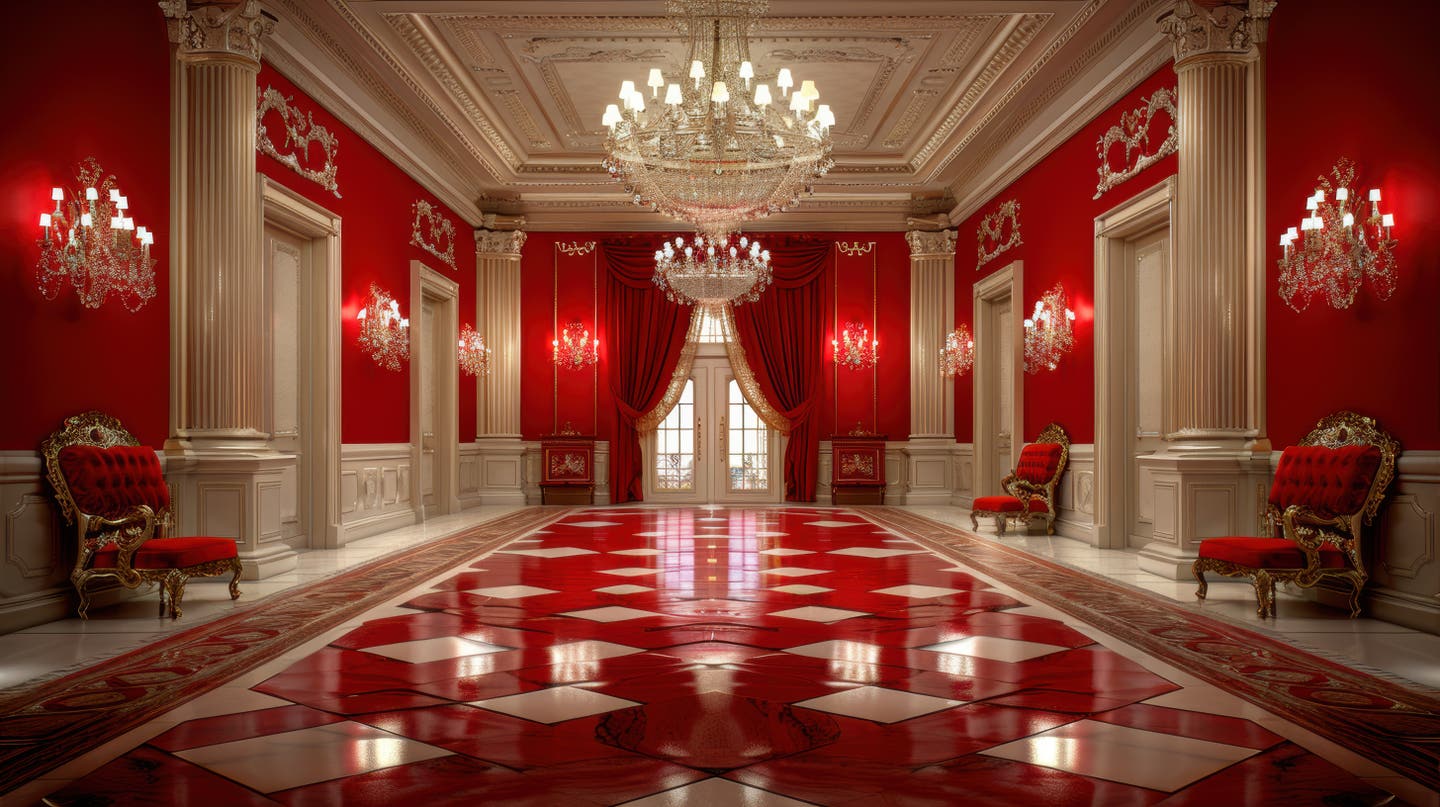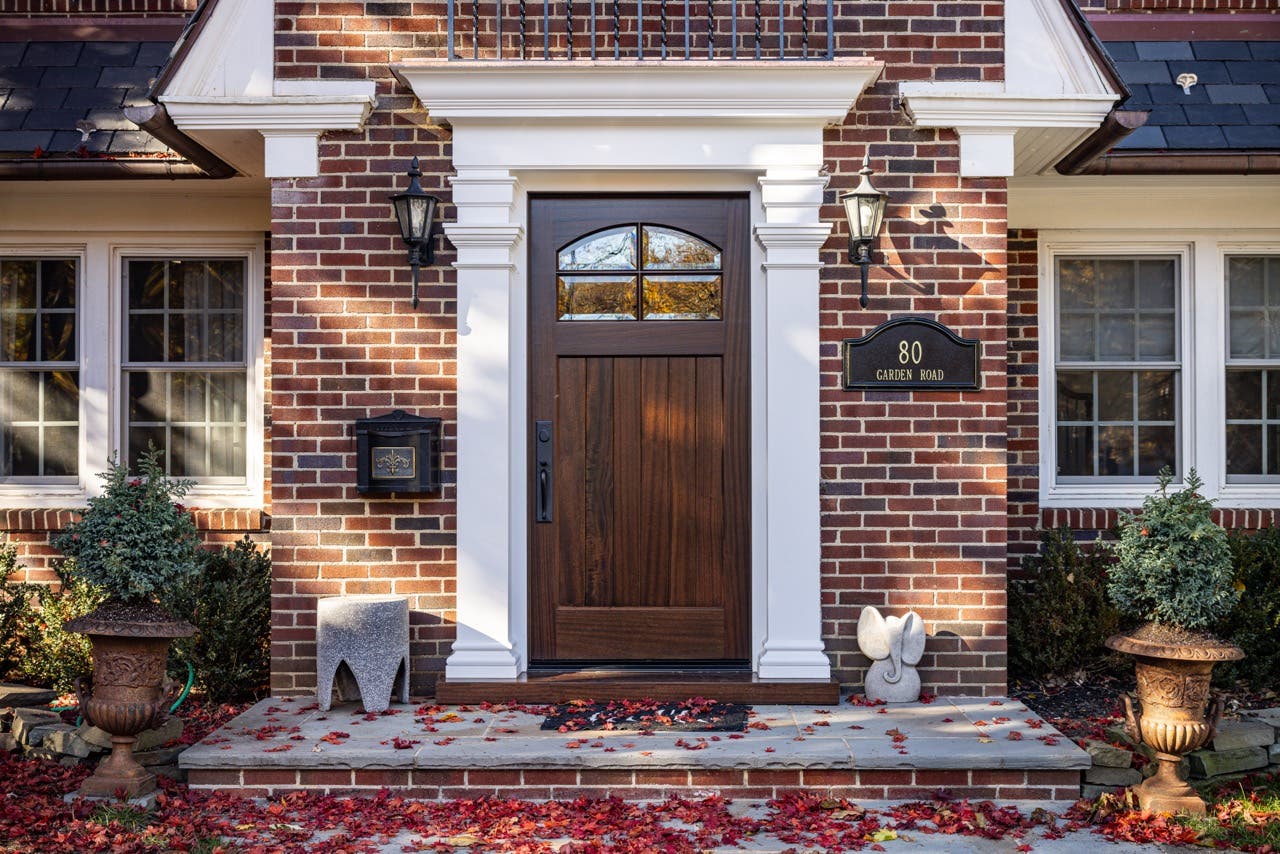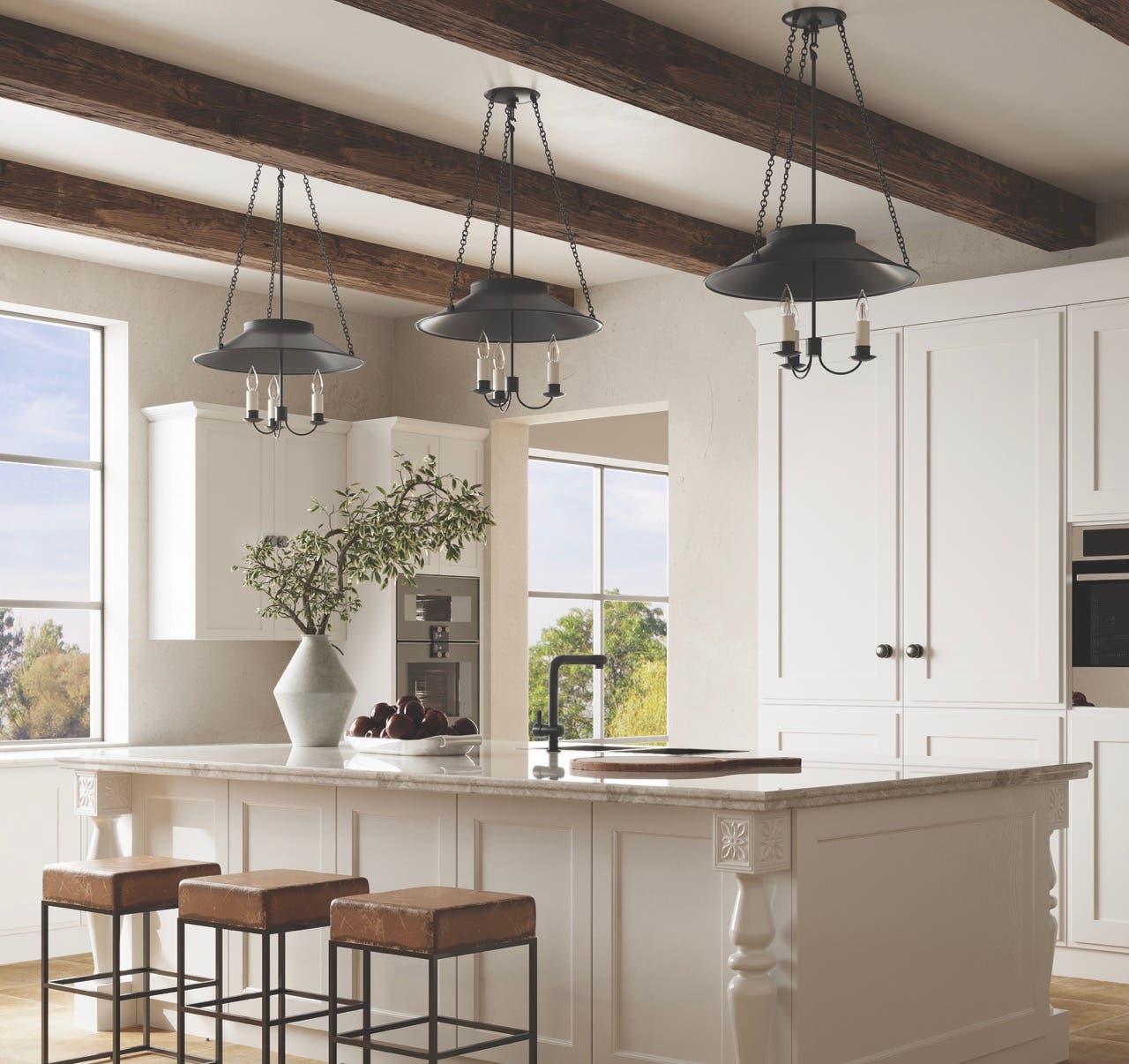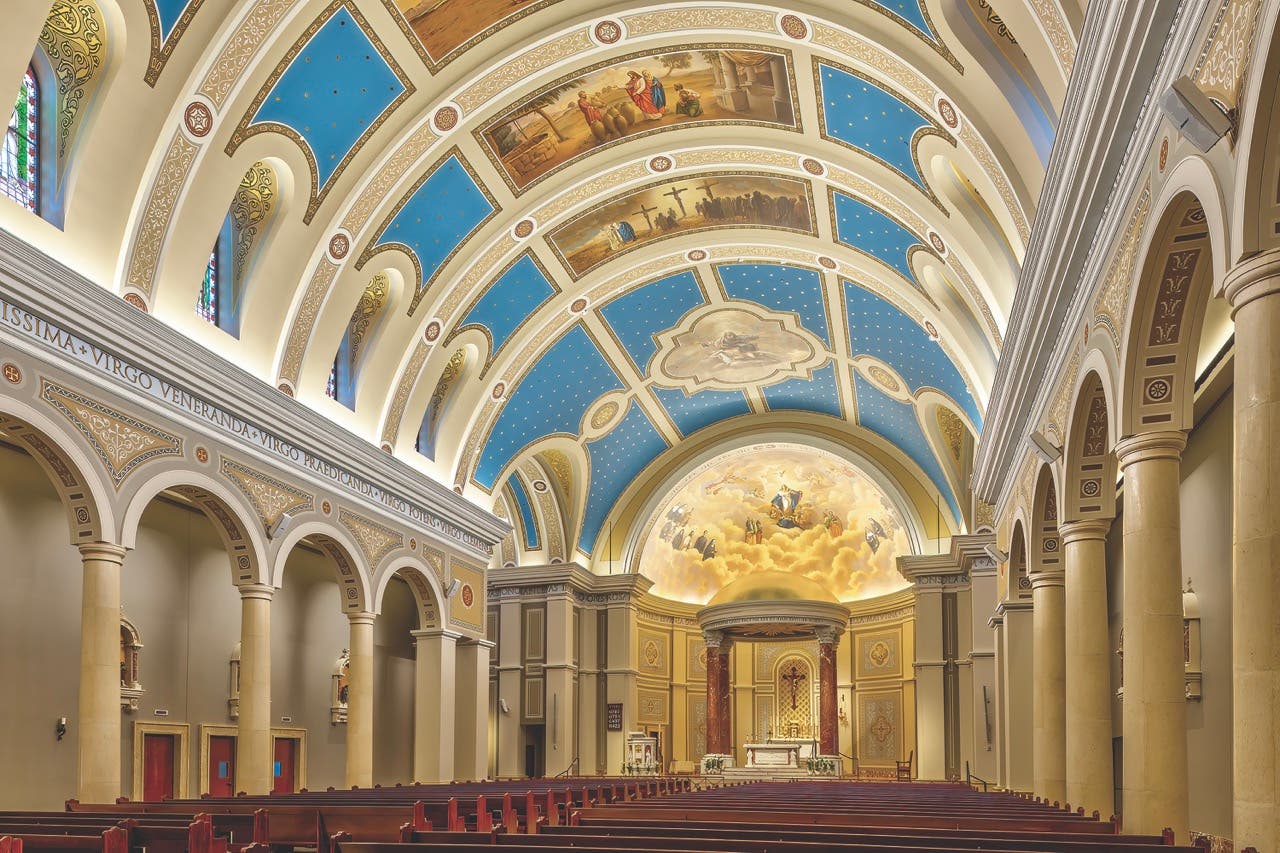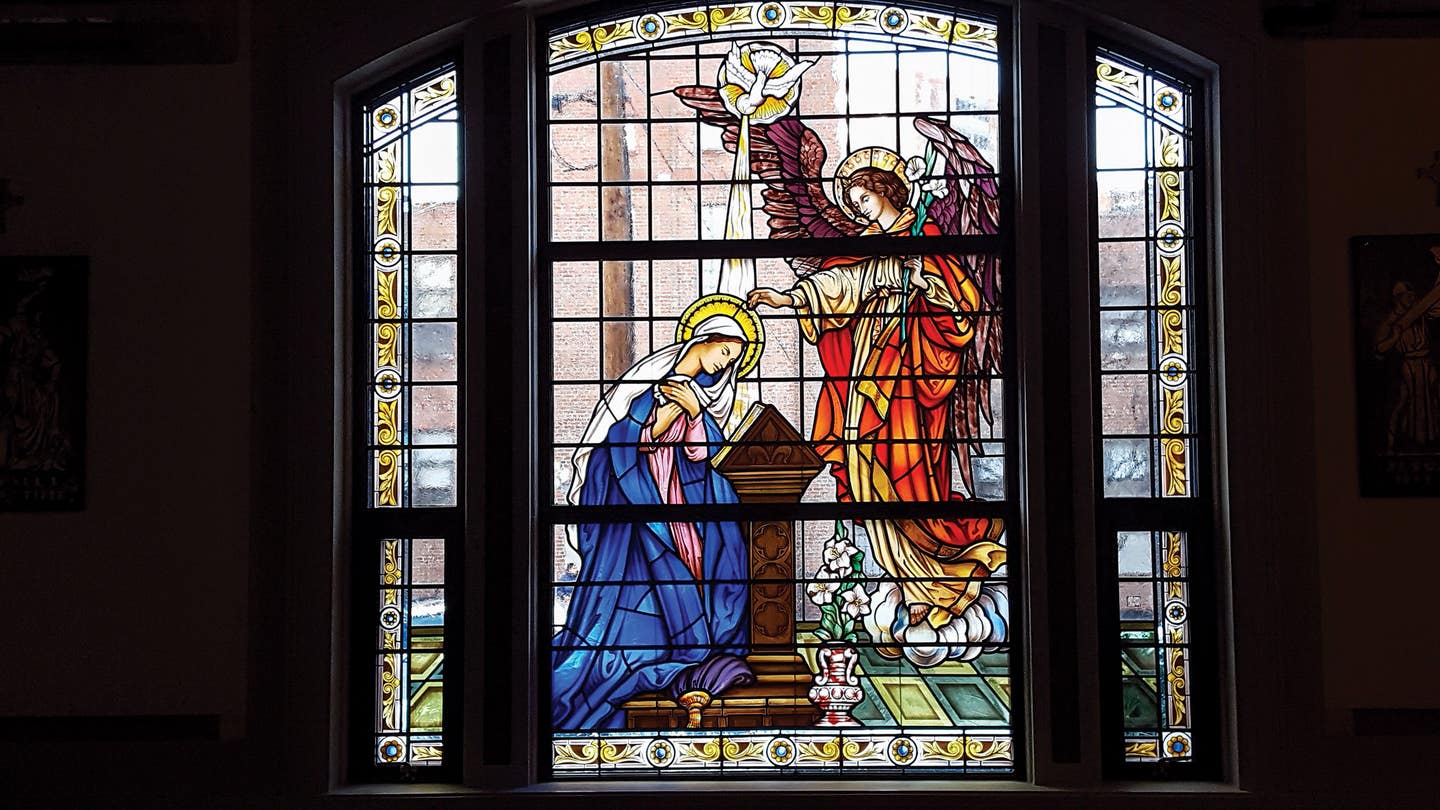
Windows & Doors
Stained-Glass Restoration
In most buildings, a window’s functionality is fairly straightforward. But stained glass windows are different, doing more than filling a space with sunlight, but also telling a story, inspiring, and maybe even bringing viewers closer to the divine.
“I think people like to go into their house of worship and look at the stained glass windows and pray, look at the artwork, reflect,” says Brian T. Baker, owner and founder of Baker Liturgical Art, which has offices in Connecticut and Florida.
Stained glass has been used in liturgical settings for centuries, but its beauty and popularity hasn’t waned. Instead, craftspeople continue to work with this ancient art form, preserving and protecting existing stained glass, and making new pieces for modern audiences.
Today, stained glass is found in museums, colleges and universities, mausoleums, private homes, public spaces, and government buildings. But it’s still most commonly associated with houses of worship, from the iconic rose windows at Notre-Dame in Paris to the Louis Comfort Tiffany stained glass windows at the Arlington Street Church in Boston.
“It was designed to tell stories,” says Peter A. Rohlf, CEO of Rohlf’s Stained & Leaded Glass Studio, Inc., in Mt. Vernon, New York. “Stained glass was the story teller of the bible centuries ago. And in some cases it still is today.”
In fact, when it comes to new pieces of stained glass, experts say new church commissions are often moving away from contemporary, abstract designs and back toward traditional images of figures and biblical scenes.
“We really see a resurgence in traditional art in the Catholic Church in what we’re doing now,” Baker says.
Rohlf agrees, saying that nearly all the new windows they’re designing are in a traditional style, such as the 31-by-16-foot stained-glass window in the chapel of Our Lady of Perpetual Help Home in Atlanta, Georgia, which depicts the resurrection of Christ.
“People want to recognize the figures and the symbols,” he says. “They don’t want the modern or abstract of yesteryear.”
Of course, that’s not always the case. One spectacular example of a contemporary stained glass window is by Bovard Studio, Inc., in the West Angeles Cathedral in Los Angeles. It consists of a central cross tower window measuring 108 ft. high, 10 ft. wide and 35 ft. deep, and a connecting stained glass clerestory band that’s 8 feet ft. high by 653 ft. long.
Ronald Bovard, owner of the Fairfield, Iowa-based company, says this Holy Spirit window is a fully abstract, contemporary design that’s representative of multiculturalism with all of its bright colors. In addition, the window had to be approved by the city of Los Angeles to meet its earthquake code.
Whether a design is traditional or contemporary, new projects begin with a concept, sketches, and a full-sized drawing, or cartoon, to create the client’s vision. Once a client approves the design, the craftspeople can get to work creating the windows.
Stained glass colors are traditionally added to the glass itself using heavy metals to create different colors, like gold for red, cobalt for blues, and copper for green. Although machine-rolled or cathedral glass is an option, many craftspeople prefer to use blown sheet glass, which often comes from Europe.
Compared to machine-made pressed glass, which Rohlf says has a “dull, flat look,” blown glass “sparkles; it has life to it.”
“If you’re looking for high-end stained glass, most of it is blown glass,” Baker agrees. “There are new techniques…but if one of my clients is looking for high-end glass, I always go toward the blown stained glass.”
Often, especially when the windows depict figures, a painter will use paint to shade, tone, and highlight the glass before it’s fired in a kiln.
Another iconic element of stained glass windows is the came, thin strips of metal which are traditionally made from lead, that hold the individual glass panels together to create the window’s images and designs.
Windows can also be waterproofed, structurally reinforced, and even crafted to withstand hurricanes and earthquakes. Rohlf adds that venting is important, too, to preventing condensation, oxidization of the leads, and dry rot of wooden frame systems.
“Even the new and restoration windows we make sure are vented today, which is an important aspect for the preservation of the windows,” he says.
When it comes to restoration and preservation, incredible care is taken to document every detail to ensure that the glass is preserved, repaired, and in some cases, re-created, exactly the way it was originally made. The first step is photographing the windows before the work starts. Then, the windows or parts of windows are carefully removed and photographed again in the studio.
Conservators will also do rubbings of the windows on acid-free, archival vellum paper, says Roberto Rosa, vice president of Serpentino Stained & Leaded Glass in Needham, Massachusetts. Rubbings not only show details like the size, shape, and location of the panels and the sizes and profiles of the lead, but also document elements like the date, artist, and any problem areas in the window for future reference and restoration.
“It’s sort of like a roadmap of the window,” Rosa says. “It’s an invaluable document for us as we’re creating and conserving the window, but also for the client afterwards.”
The panels are also cleaned and the lead is removed where needed. Depending on the type and extent of the glass damage, the panels might be repaired with epoxies or replaced completely. Although some conservators replace all the lead came during this process, Rosa prefers a less-is-more approach and only uses new lead where it’s needed, particularly if it’s a La Farge or Tiffany window.
Instead, he reuses the original lead because it’s part of the window’s “history and integrity.” He points to one project at Salve Regina University in Newport, Rhode Island, where they restored 13 windows by John La Farge and saved about 85 percent of the original lead.
“It’s such fine, detailed leading and craftsmanship,” Rosa says. “It would be a crime to just dismantle it and throw it all away.”
Whether it’s brand new or painstakingly restored, a beautiful stained glass window does more than filter light.
“I really think it’s spiritual,” says Baker. “I think it makes people feel good.”
Stained-Glass Resources
Bovard Studio Inc.
2281 Business Highway 34
Fairfield, Iowa
1-800-452-7796
www.bovardstudio.com
Rohlf’s Stained & Leaded Glass Studio
783 South Third Ave.
Mount Vernon, NY
914-699-4848
rohlfstudio.com
Rambusch Lighting Co.
160 Cornelison Ave.
Jersey City NJ
201-333-2525
rambusch.com
The Art of Glass, Inc.
316 Media Station Road
Media, Pennsylvania
610-891-7813
theartofglassinc.com
Serpentino Stained and Leaded Glass
21 Highland Circle
Needham, MA
781-760-7602
serpentinostainedglass.com
Burnham and LaRoche Associates
441-443 Fulton Street
Medford, MA
781-395-5047
BurnhamLaroche.com
Botti Studio of Architectural Arts
1225 Harms Road
Glenview, IL
Phone: 847-869-5933
bottistudio.com
Baker Liturgical Art
1219 Meriden Waterbury Road
Plantsville, CT
860-621-7471
bakerliturgicalart.com
The Hyland Studio
650 Reed St.
Santa Clara, CA
408-748-1806
hylandstudio.com



